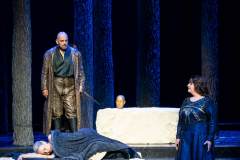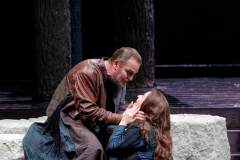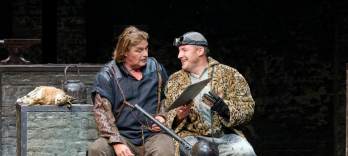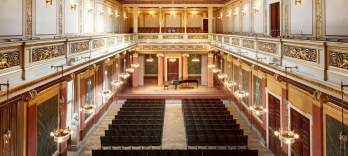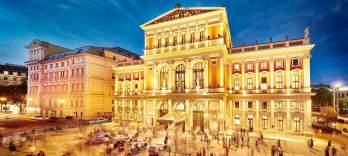Die Walküre
June 2025 | ||||||
|---|---|---|---|---|---|---|
Mo | Tu | We | Th | Fr | Sa | Su |
Synopsis
ACT 1
Siegmund, on the run from pursuers, arrives at Hunding's home, heavily exhausted.
His wife, Sieglinde, receives the hero and gives him a drink. When Hunding returns home, Siegmund recounts his life filled with misfortune. Hunding soon realizes that he has before him the man he has set out to kill. As he wants to preserve the right of hospitality, he postpones the duel with the unarmed Siegmund until the next morning.
Sieglinde manages to give her husband a sleeping draught. She also shows Siegmund a sword that has been thrust into the trunk of an ash tree by a mysterious stranger. Siegmund and Sieglinde, who have fallen in love with each other, realize that they are twin siblings and violate the law of hospitality with their incestuous, adulterous love.
ACT 2
The enigmatic stranger is the supreme god Wotan, guardian of all contracts.
He fathered the twins Siegmund and Sieglinde with a mortal woman. He now wants to send the Valkyrie Brünnhilde - his daughter from his union with the goddess Erda - to the battlefield to give Siegmund victory against Hunding. But Wotan's wife Fricka intervenes: the Lord of Contracts must not cover up unlawful acts such as adultery and incest. Wotan's hope that a hero might one day win back the Ring of the Nibelung is dashed.
He orders Brünnhilde to kill Siegmund, against his own wishes. She announces Siegmund's imminent death, but promises him entry into Valhalla. Siegmund refuses the latter when he learns that Sieglinde cannot accompany him. Brünnhilde, moved by his love, defies Wotan's orders and fights for Siegmund. Wotan is forced to kill Siegmund himself.
ACT 3
Brünnhilde rescues the pregnant Sieglinde.
For Sieglinde and Siegmund's son, who is to be called Siegfried, she leaves behind the sword that was broken in the battle against Hunding and Wotan. Then the furious Wotan reaches the renegade Valkyrie, strips her of her divinity and condemns her to become the wife of the first best man. In the end, he softens his sentence: the best. He surrounds her with a wall of fire that only the best can pass through.
ACT 1 - 65 MIN
INTERMISSION - 25 MIN
ACT 2 - 95 MIN
INTERMISSION - 25 MIN
ACT 3 - 90 MIN
Program and cast
Siegmund: Andreas Schager
Hunding: Kwangchul Youn
Wotan: Iain Paterson
Sieglinde: Lise Davidsen
Brünnhilde: Anja Kampe
Fricka: Monika Bohinec
Musical direction: Philippe Jordan
Direction: Sven-Eric Bechtolf
Stage: Rolf Glittenberg
Costumes: Marianne Glittenberg
Video: fettFilm (Momme Hinrichs and Torge Möller)
Vienna State Opera
Public Transport
Subway lines: U1, U2, U4
Trams: 1, 2, D, J, 62, 65
Buses: 59A
Local Railway: Badner Bahn
Stops: Karlsplatz / Opera
Taxi stands are available nearby.
Parking
Parking is only € 6, - for eight hours!
The Wiener Staatsoper and the ÖPARK Kärntner Ring Garage on Mahlerstraße 8, under the “Ringstraßengalerien”, offer the patrons of the Vienna State Opera a new, reduced parking fee. You can park in the Kärntner Ring Garage for up to 8 hours and pay only a flat fee of € 6, -. Just validate your ticket at one of the discount machines inside the Wiener Staatsoper. The normal rate will be charged for parking time greater than 8 hours. The validation machines can be found at the following coat checks: Operngasse, Herbert von Karajan-Platz, and the right and left and balcony galleries.
Important: In order to get the discount, please draw a ticket and do not use your credit card when entering the garage!
After devaluing your ticket in the Wiener Staatsoper you can pay comfortably by credit card or cash at the vending machines.
The machines accept coins and bills up to 50.- Euro. Parking time longer than 8 hours will be charged at the normal rate.
History
The structure of the opera house was planned by the Viennese architect August Sicard von Sicardsburg, while the inside was designed by interior decorator Eduard van der Nüll. It was also impacted by other major artists such as Moritz von Schwind, who painted the frescoes in the foyer, and the famous "Zauberflöten" (“Magic Flute”) series of frescoes on the veranda. Neither of the architects survived to see the opening of ‘their’ opera house: the sensitive van der Nüll committed suicide, and his friend Sicardsburg died of a stroke soon afterwards.
On May 25, 1869, the opera house solemnly opened with Mozart's Don Giovanni in the presence of Emperor Franz Joseph and Empress Elisabeth.
The popularity of the building grew under the artistic influence of the first directors: Franz von Dingelstedt, Johann Herbeck, Franz Jauner, and Wilhelm Jahn. The Vienna opera experienced its first high point under the direction of Gustav Mahler. He completely transformed the outdated performance system, increased the precision and timing of the performances, and also utilized the experience of other noteworthy artists, such as Alfred Roller, for the formation of new stage aesthetics.
The years 1938 to 1945 were a dark chapter in the history of the opera house. Under the Nazis, many members of the house were driven out, pursued, and killed, and many works were not allowed to be played.
On March 12, 1945, the opera house was devastated during a bombing, but on May 1, 1945, the “State Opera in the Volksoper” opened with a performance of Mozart's THE MARRIAGE OF FIGARO. On October 6, 1945, the hastily restored “Theaters an der Wien” reopened with Beethoven's FIDELIO. For the next ten years the Vienna State Opera operated in two venues while the true headquarters was being rebuilt at a great expense.
The Secretary of State for Public Works, Julius Raab, announced on May 24, 1945, that reconstruction of the Vienna State Opera would begin immediately. Only the main facade, the grand staircase, and the Schwind Foyer had been spared from the bombs. On November 5, 1955, the Vienna State Opera reopened with a new auditorium and modernized technology. Under the direction of Karl Böhm, Beethoven’s FIDELIO was brilliantly performed, and the opening ceremonies were broadcast by Austrian television. The whole world understood that life was beginning again for this country that had just regained its independence.
Today, the Vienna State Opera is considered one of the most important opera houses in the world; in particular, it is the house with the largest repertoire. It has been under the direction of Dominique Meyer since September 1, 2010.
Performances: Fr 07 Mar 2025,
Performances: Sa 27 Jul 2024,
Performances: Su 08 Jun 2025,
Performances: Su 10 Nov 2024,
Performances: Su 03 Nov 2024,
Performances: We 11 Dec 2024,

 EN
EN DE
DE IT
IT FR
FR ES
ES RU
RU JP
JP RO
RO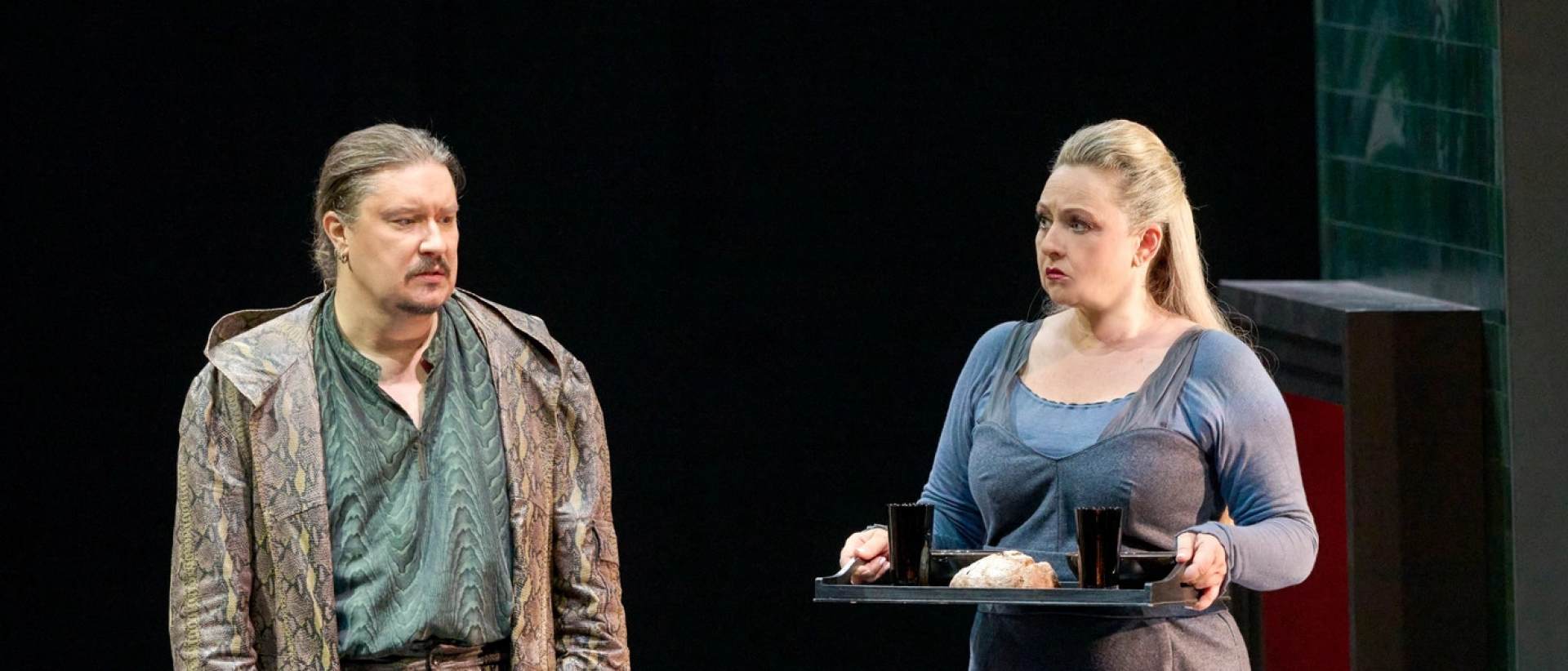
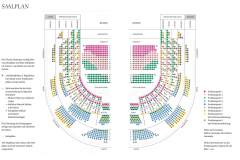 Seating plan
Seating plan 
